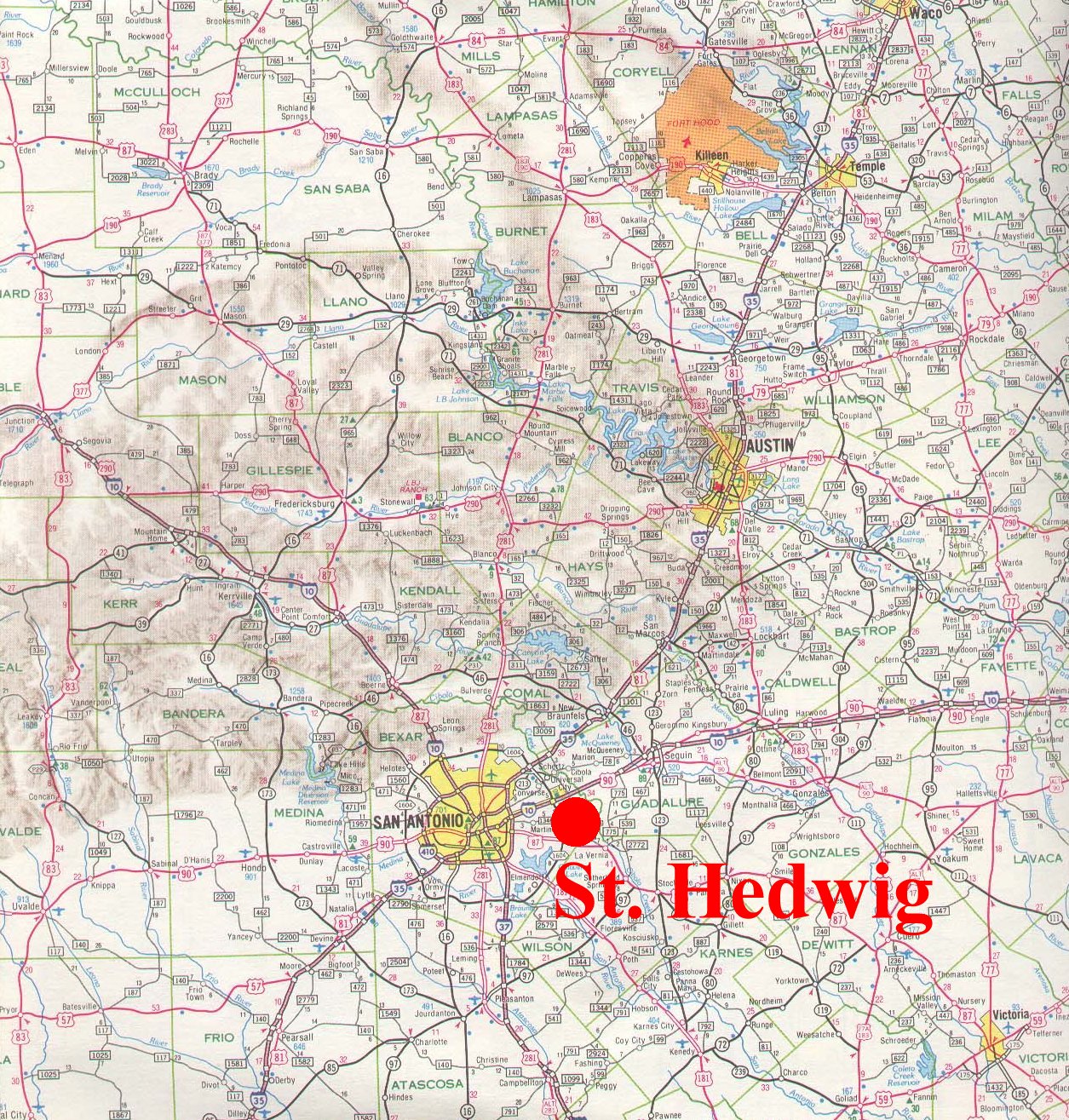
Kris Mylius & Michelle Stiefer
Click on map to see larger view.

 Adam and Mariana Pierdola, Martin and France Pierdola, Joseph
Mihalski, Florentine Tudyk, Mikolaj and Franciska Tudyk, Jacob Zaiontz,
Thomas Krawietz, Anton and Frances Aniol, Paul and Franciska Kasmarek,
Walter and Cecelia Stanush, Valentine Aniol, Frank and Mary Kosub, Martin
and Mayra Cibis, and Paul and Franciska Kasmarek. Some of their tombstones
can still be found in the church cemetary. John Dorstyn, a Polish immigrant
married to an American, was instrumental in the settling of St. Hedwig.
He helped the settlers overcome many hardships like language, for an example.
John Dorstyn served as a translator for the Polish speaking immigrants.
He too, is buried in the St. Hedwig church cemetery.
Adam and Mariana Pierdola, Martin and France Pierdola, Joseph
Mihalski, Florentine Tudyk, Mikolaj and Franciska Tudyk, Jacob Zaiontz,
Thomas Krawietz, Anton and Frances Aniol, Paul and Franciska Kasmarek,
Walter and Cecelia Stanush, Valentine Aniol, Frank and Mary Kosub, Martin
and Mayra Cibis, and Paul and Franciska Kasmarek. Some of their tombstones
can still be found in the church cemetary. John Dorstyn, a Polish immigrant
married to an American, was instrumental in the settling of St. Hedwig.
He helped the settlers overcome many hardships like language, for an example.
John Dorstyn served as a translator for the Polish speaking immigrants.
He too, is buried in the St. Hedwig church cemetery.
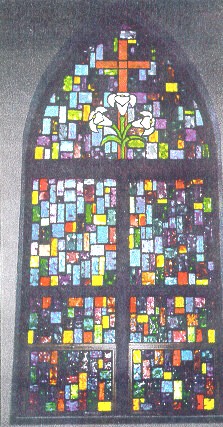
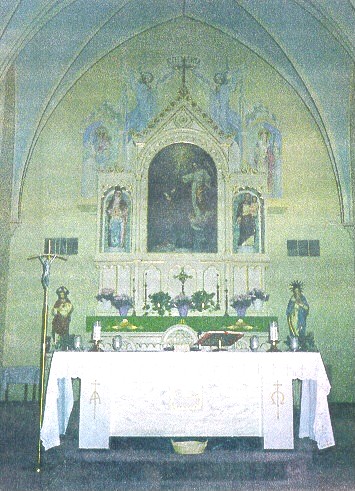
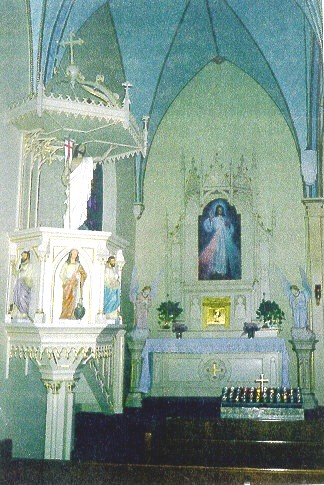
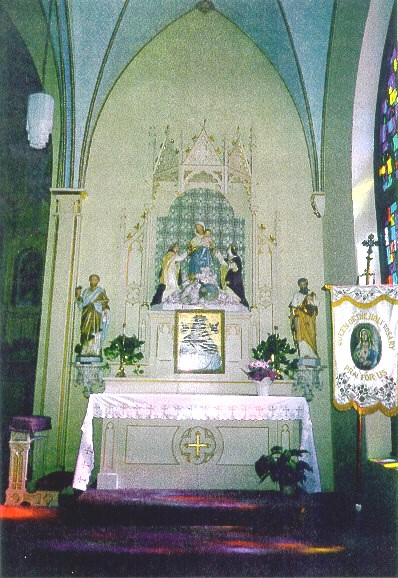

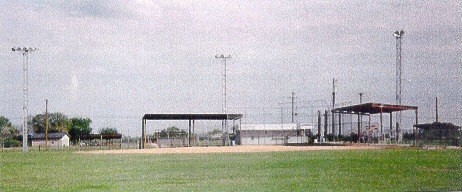
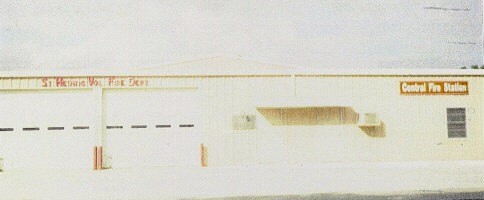
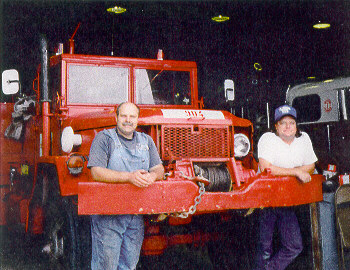
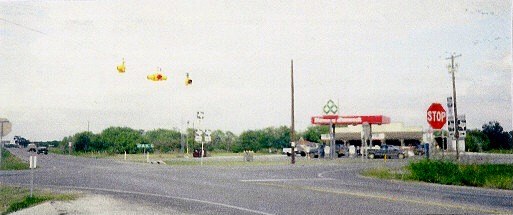
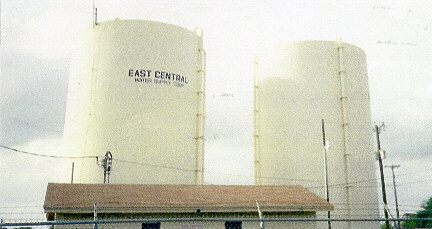 The last focal point in St. Hedwig happens to also be the busiest.
The convenience store, located at the corner
of FM 1518 and FM 1346, is the main reference point in town. The four-way
stop, noted for the town's only
traffic light, is commonly called "Four
Points." On the opposite corner
from the store stands two large water towers belonging to the East Central
Water Supply Corporation. Almost everyone in St. Hedwig passes by this
spot daily which makes it a very good spot for business, especially since
the next nearest gas station is miles away.
The last focal point in St. Hedwig happens to also be the busiest.
The convenience store, located at the corner
of FM 1518 and FM 1346, is the main reference point in town. The four-way
stop, noted for the town's only
traffic light, is commonly called "Four
Points." On the opposite corner
from the store stands two large water towers belonging to the East Central
Water Supply Corporation. Almost everyone in St. Hedwig passes by this
spot daily which makes it a very good spot for business, especially since
the next nearest gas station is miles away.
Baker, T. Lindsay. The Polish Texans. San Antonio: The University of Texas Institute of Texan Cultures, 1982.
Cisneros-Lunsford, Anastasia. AFirefighters build on past.@ Southside Reporter. 24 Aug. 1994: S1+S5.
McGuire, James P. The Polish Texans. San Antonio: The University of Texas Institute of Texan Cultures, 1972.
Smith, R. George. AHe didn=t elect to seek post but St. Hedwig voted him in.@ San Antonio Light. 3 Aug. 1989: B3
Strzelczyk, Albert. Personal Interview. 27 Oct. 1998.
